Honey Bee Removal
- Bee Safe, Bee Ethical, Bee Humane
If you find you believe you have a colony of honey bees that appear to
be intent on setting themselves up permanently in a place that is inconvenient
for you, then you may need to have them removed.
Here is my guide to being as humane as possible. Hopefully, you can have them relocated to a suitable place.
Summary Steps For Removal Of A Honey Bee Nest Or Swarm
1.
Identify whether the bees are honey bees or not.
2. Contact a beekeeper via your local beekeeping association, and seek advice and help. They may or may not charge, but you need to confirm this in advance.
3. If appropriate and you are able, leave them alone, or become a beekeeper.
4. If you need to have them removed, act quickly and get help – don’t attempt it yourself.
Methods Of Removal
- Swarms may simply be collected and taken away by beekeepers. Contact your local beekeeping association. They can often be found by googling for 'beekeeping association' and your area. For US visitors, I have a contact list of beekeeping associations in North America, but it is not necessarily complete. If you do not find one suitably located, again, use the search engine.
- Nests may be removed via various means, but it really
depends on the circumstances. They may need
to be cut out, for example, and the nest relocated.
Again, all honey comb must be removed, and all entrance areas must be blocked.
- New and innovative ways are increasingly being trialed to
remove bee nests safely and without harming the bees. Specially modified vacuum cleaners are even being
trialed to gently hoover up the bees and relocate them to a safe place.
- If you have a nest in a tree, consider whether it really is a threat or could be left alone. See example below.
More detail below.
1. Are You Sure You Have Honey Bees?
First, be sure that you have honey bees.
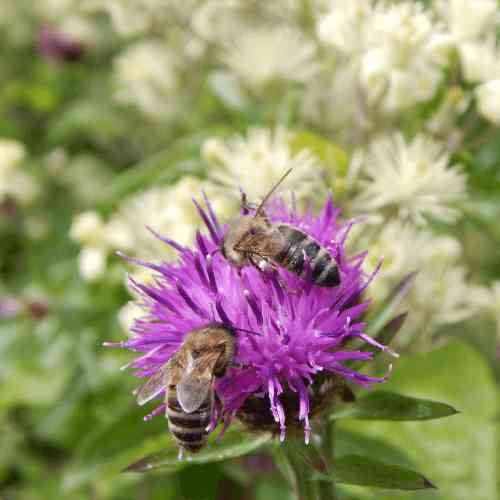 Honey bees
Honey beesIt is surprising how many people think they have a colony of honey bees, when in actual fact, they have a colony of bumble bees.
If it is actually a bumble bee nest, you can
more than likely leave them alone, because these nests only last a season so that the nest will no longer be active within a few weeks. Bees are having a hard time right now, so see
if you can do the bees a favour, and leave them alone.
Bumble bees, in comparison with honey bees, are rounder, sometimes more colourful, and live in much smaller colonies than honey bees. See the photographs below.
Take into account that bumble bees can be more varied in their colouring and markings.
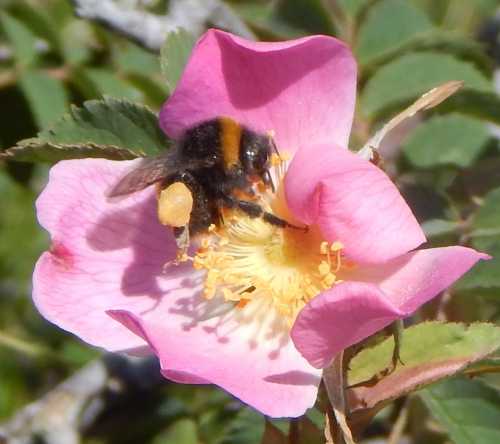
Bumble bee
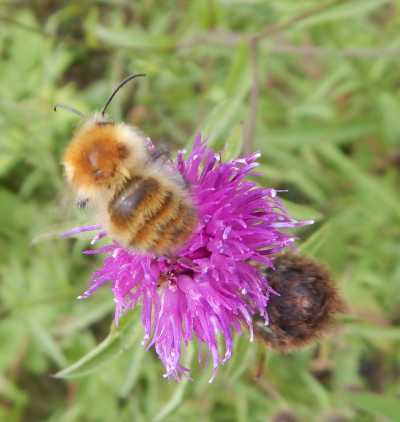
Common carder bumble bee
Solitary bees can also be mistaken for honey bees. Species of
carpenter, mason bees and
leafcutters can all look fairly similar to honey bees. The question to
ask is ‘how many bees are there?’ Honey bee colonies consist of
thousands, not
merely hundreds or ‘a few’ bees.
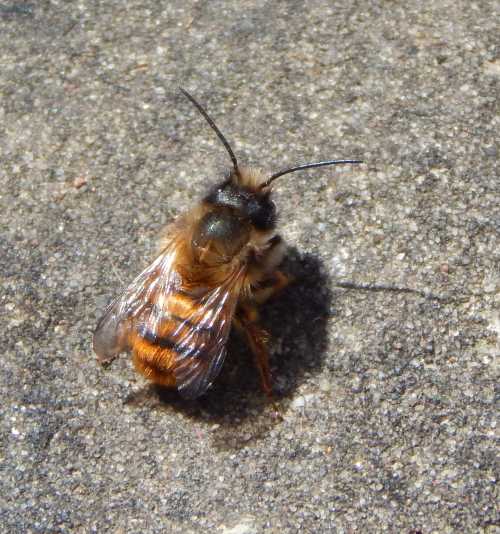
Mason bee
2. Is It Something You Are Wanting To Try To Do Yourself?
If so, I recommend against it unless you are a beekeeper and have the expertise and equipment to perform the operation correctly.
This job needs protective clothing, quite possibly a smoker, and an appropriate vessel in which to remove honey bees away from the area, and hopefully to a new location where they will be welcome to settle.
If it's a nest rather than a swarm, this needs to be done in such a fashion that wasps will not be attracted into the area later. Entrances to the nest site must be blocked and honey comb removed. Call a beekeeper or professional!!
3. Africanized Bees
In some parts of the USA, Africanized bees have to be dealt with in a
particular way. Contact your local
council to ask what the policy is, and see whether and how they are dealing
with the issue.
4. Do you have a swarm or a nest?
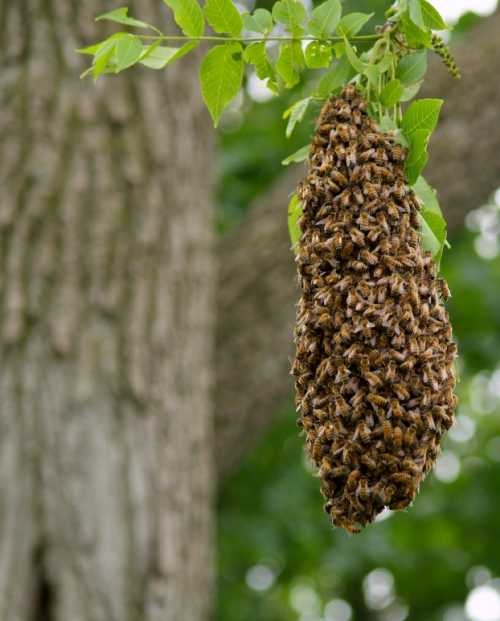 Honey bee swarm on tree branch.
Honey bee swarm on tree branch.If you see a swarm hanging from a tree branch, it may be temporary, but if you are concerned, a beekeeper will usually be able to remove them (assuming the location is not too awkward)! Read more about bee swarm removal.
A nest however, means the bees have set up a permanent residence! Nests tend to occur in crevices that can be natural or man-made.
The images below show the location of a wild honey bee nest in a tree trunk.
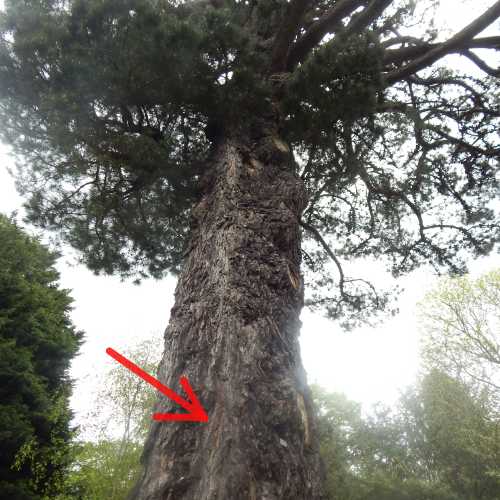
In this garden, the bees are left to continue with their activities.
If you have recently discovered a new nest and need to have the bees removed, act now
This means there will be less comb to be removed. The removal of honey comb is important to
deter other colonies of bees or even visits by wasps or hornets. In addition, any entrances to the nest will, as stated,
need to be identified and blocked to prevent other bees entering the nest area
once the honey bees have been removed.
If you found this page helpful or interesting, I'd really be grateful if you would share it with others - if not this page, perhaps another, such as Gardening For Bees.
Thank you so much :) .